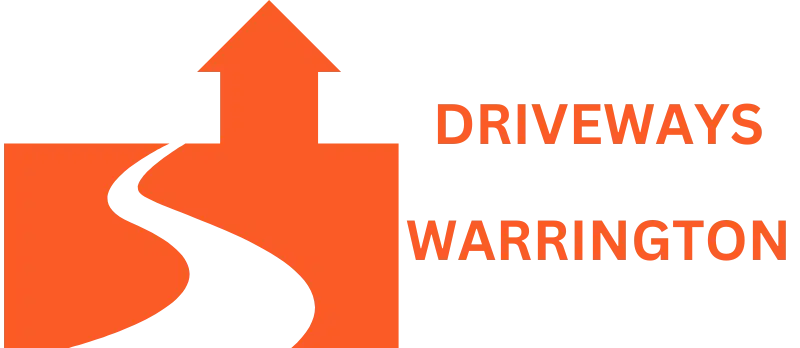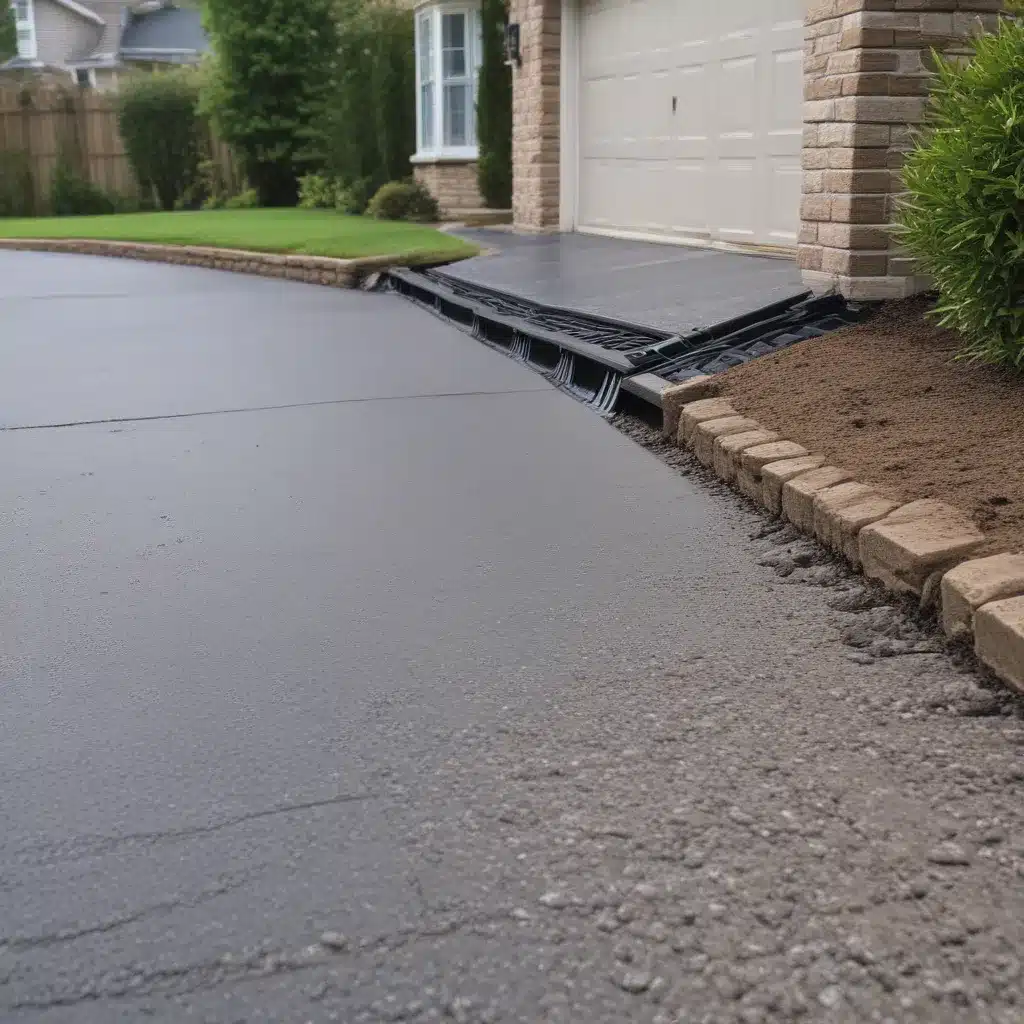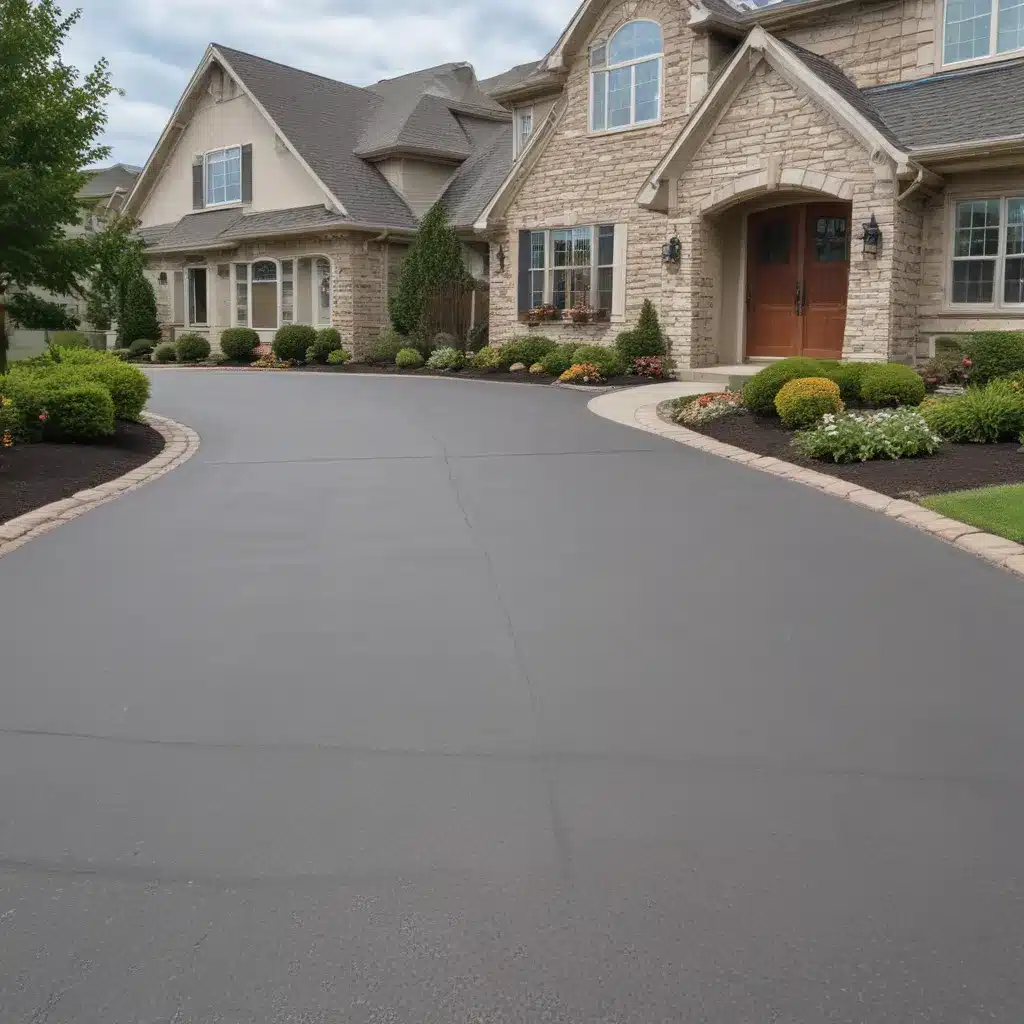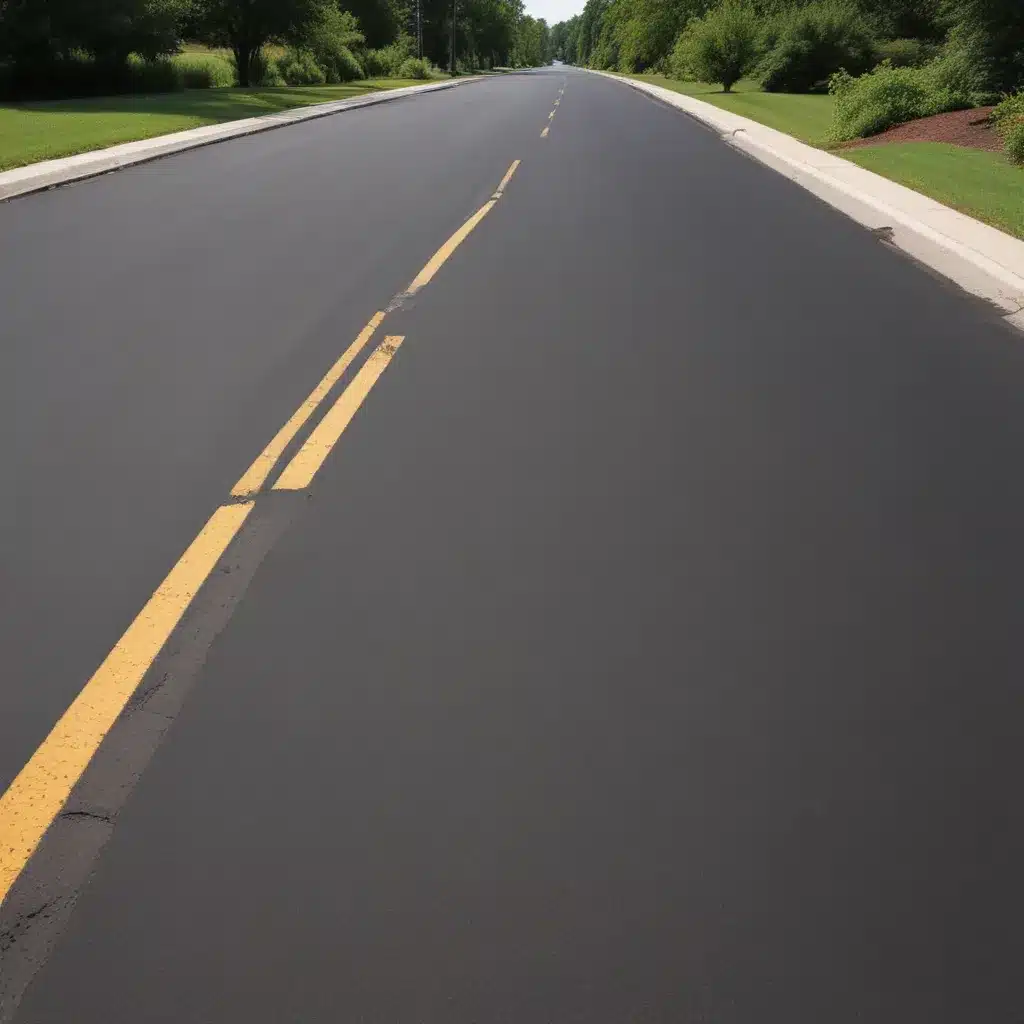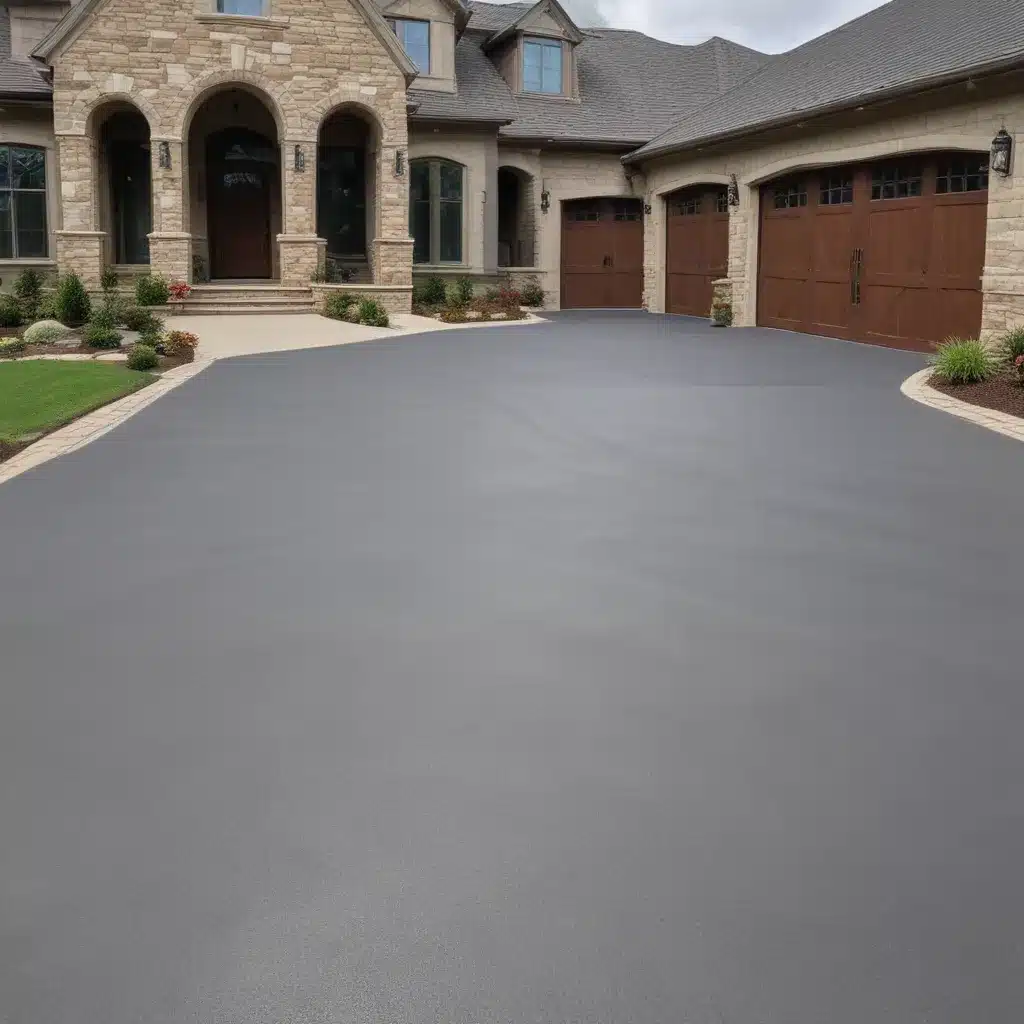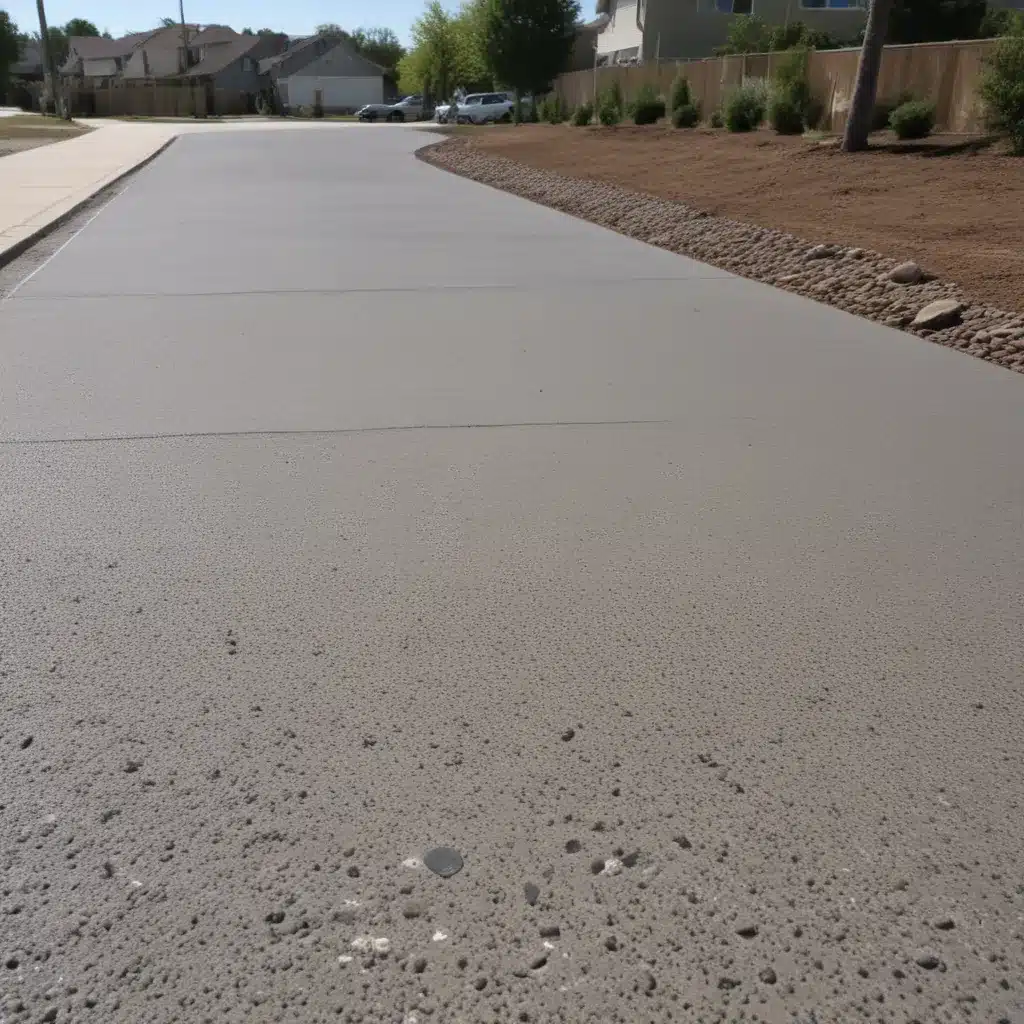The Unsung Heroes Beneath Your Feet
Have you ever given much thought to the unseen infrastructure beneath your driveway? I’ll admit, it’s not the most glamorous topic, but bear with me – this hidden drainage system is the unsung hero that keeps your home’s exterior running smoothly.
You see, our driveways are like icebergs – what we see on the surface is just the tip of the proverbial pavement. Lurking beneath those sleek, stylish stones or that pristine patterned concrete, there’s a whole underground network of pipes, grates, and channels working tirelessly to divert water away from your home’s foundation.
And let me tell you, this hidden drainage system is worth its weight in… well, gravel. Without it, your driveway would quickly become a sodden mess, a veritable lake after every rainstorm. Puddles the size of small ponds would form, threatening to seep into your garage, damp-proof your doorway, and slowly but surely undermine the very structure of your home. It’s enough to make any homeowner break out in a cold sweat just thinking about it.
The Anatomy of a Driveway Drainage System
So what exactly does this hidden drainage system entail? Well, it’s a bit like the circulatory system of your driveway – a complex network of components all working in harmony to keep the water flowing.
Let’s start with the basics: the surface of your driveway is usually sloped, ever so slightly, to encourage the water to run off rather than pool. This gentle gradient is the first line of defense, gently shepherding the rainwater towards the edges of your driveway.
From there, you’ll typically find a series of strategically placed drainage grates or trench drains. These unsung heroes act as the entry points, allowing the water to filter down into the underground system. Depending on the complexity of your setup, you might have several of these dotted around, ensuring comprehensive coverage.
Once the water has made its way past the surface, it flows into a network of perforated pipes or French drains buried beneath the driveway. These pipes are specially designed with small holes or slots that allow the water to seep in while keeping the soil in place. It’s like a subterranean aqueduct, quietly carrying the runoff away from your home.
And the final piece of the puzzle? The outlet – the point where all this water is discharged, usually into a storm drain, a ditch, or a dry well on your property. This is where the system completes its mission, safely diverting the water away from your home’s foundation.
The Importance of Proper Drainage
Now, you might be wondering, “Why all the fuss? It’s just a bit of water, right?” Wrong, my friend. Proper driveway drainage is crucial for the long-term health and stability of your home.
You see, when water isn’t properly diverted, it can wreak havoc in a number of ways. First and foremost, it can lead to foundation issues. As that water seeps into the soil around your home’s base, it can cause the ground to become oversaturated, leading to settling, cracking, and even structural damage over time. And trust me, foundation repairs are not something you want to be dealing with – they’re expensive, disruptive, and can seriously undermine the value of your property.
But the problems don’t stop there. Standing water on your driveway can also become a breeding ground for mosquitoes, a nuisance that no one wants to deal with. And let’s not forget the slip and fall hazards posed by icy patches in the winter or algae growth in the warmer months. It’s a recipe for disaster, both for your home and your personal safety.
The Consequences of a Failing Drainage System
So, what happens when your driveway’s hidden drainage system starts to fail? Well, it’s not a pretty sight.
Imagine a scene straight out of a disaster movie: Water pooling around your garage door, slowly creeping its way towards the foundation. Puddles the size of small ponds forming, threatening to drown your precious cars. And the cherry on top? The constant sound of gurgling, bubbling water, a symphony of suburban nightmares.
But the real kicker? This isn’t just a superficial problem. No, a failing drainage system can lead to a whole host of issues, from foundation cracks and structural damage to mold growth and even pest infestations. It’s a domino effect of home improvement woes that no homeowner wants to experience.
And let’s not forget the financial toll. Repairing a compromised driveway drainage system can be a costly endeavor, often requiring the excavation of the entire driveway and the replacement of the underground pipes and channels. We’re talking thousands of dollars, folks – money that could have been better spent on, I don’t know, a dream vacation or that home theater system you’ve been eyeing.
Maintaining Your Driveway’s Hidden Gem
So, what’s the solution? How do you keep this hidden drainage system in tip-top shape, ensuring that it continues to work its magic behind the scenes? Well, it all comes down to regular maintenance and a keen eye for potential issues.
First and foremost, it’s important to keep those surface-level drainage grates and trench drains clear of debris. Whether it’s fallen leaves, twigs, or the occasional errant tennis ball, anything that can clog these entry points will disrupt the flow of water and compromise the entire system. A quick once-over with a broom or a garden trowel can make all the difference.
And while you’re at it, take a look at the overall slope of your driveway. Over time, the gentle gradient can become uneven, causing water to pool in unexpected places. A quick adjustment with a shovel or some strategic re-leveling can help restore that crucial downward flow.
But the real key to keeping your driveway’s drainage in tip-top shape? Regular inspection and maintenance. Every few years, it’s a good idea to have a professional take a closer look at the underground components, using specialized cameras and tools to identify any potential issues before they become major problems.
And let’s not forget the importance of staying vigilant. Keep an eye out for signs of trouble, like unexplained puddles, strange noises, or even the dreaded sinking or cracking of the driveway surface. The sooner you catch these issues, the easier and more cost-effective they’ll be to address.
Don’t Neglect Your Driveway’s Unsung Hero
So, there you have it – the unsung heroes that lurk beneath your driveway, working tirelessly to keep your home’s exterior high and dry. From the gentle slopes that shepherd the water away to the complex network of pipes and grates that whisk it off to safety, this hidden drainage system is the backbone of a well-functioning driveway.
And let me tell you, neglecting this vital infrastructure is a recipe for disaster. Puddles, foundation cracks, and costly repairs – these are the consequences of a failing drainage system, and they’re not something any homeowner wants to deal with.
But the good news is, with a little bit of attention and care, you can keep this hidden gem in tip-top shape. Regular maintenance, strategic inspections, and a keen eye for potential issues – these are the keys to ensuring your driveway’s drainage system continues to work its magic, day in and day out.
So, the next time you step out onto your driveway, take a moment to appreciate the unsung heroes beneath your feet. They may be out of sight, but they’re most definitely not out of mind. After all, a well-functioning drainage system is the foundation (pun intended) of a healthy, beautiful driveway – and a happy, worry-free homeowner.
And who knows, maybe one day you’ll even find yourself waxing poetic about the beauty of a well-placed drainage grate. Stranger things have happened, right?
Now, if you’ll excuse me, I think it’s time to grab a broom and give those entry points a good once-over. Gotta keep those unsung heroes in tip-top shape, you know?
